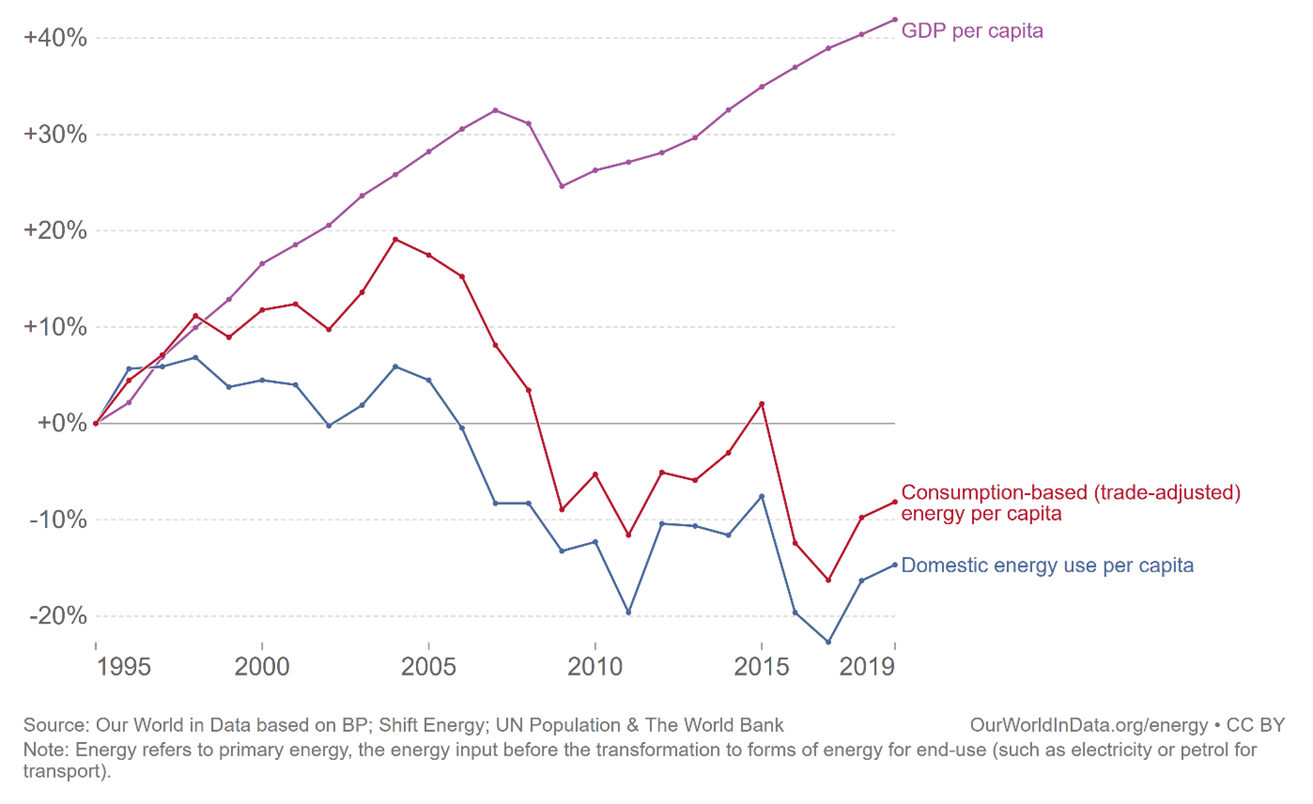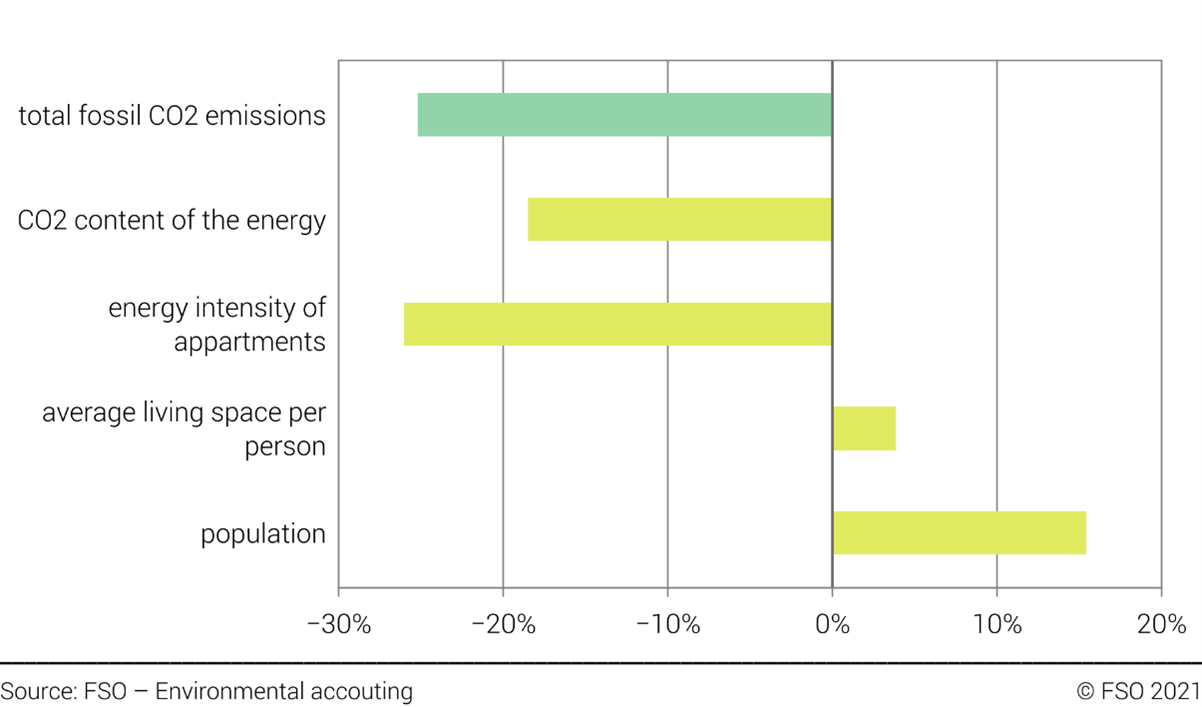Over the last few years, one of the main themes of my research has been understanding how the transition to energy-efficient buildings is facilitated by a green price premium. At a larger scale, the implication of markets rewarding greener products and services is that combating the climate emergency and having economic growth are not a seesaw but instead work together in tandem. Critics of green economic growth, the ‘green business case’, or indeed any attempt to marry capitalism with sustainability argue that we are collectively falling prey to a deceptive fallacy. The thinking behind the green growth idea seems to be: wouldn’t it be nice if we in affluent Western consumer societies could retain our way of life and continue to live in unbridled comfort and wealth whilst quietly and seamlessly decarbonising our economies? ‘Wrong, dead wrong!’ contend the critics. To achieve the emissions cuts that are needed to avert catastrophic climate change, these softer approaches amount to little more than tinkering around the edges. What we need is change, radical change and that means changing our entire modus operandi. Unless we really get down to the engine room and switch off the profit motive button as the principal governor of our economic systems, we will only ever be awarded an endless succession of greenwashing cycles by companies that want to do as little as possible for the environment while maximising their profits. This is not (yet) a mainstream argument but from what I am observing seems to be gathering momentum.
Do they have a point? Let’s take a step back. Most would probably agree that we must at least decouple economic growth from resource use if we want to retain any kind of chance of solving some of the most pressing global problems. The good news is that the data are telling us that we have largely achieved this in the developed world. The graph below shows this for the UK (Figure 1).
Now of course you might argue that this is a mere artefact and is due only to shifting the production of goods from the West to emerging economies such as China, thereby effectively offshoring our carbon emissions. Simon Kuznets was one of the first to argue along such lines more than 50 years ago when he postulated that as economies develop they initially pollute and harm the environment more but this then abates again beyond a certain point. The famous inverted U-shaped environmental Kuznets curve is an illustration of this idea.
However, when we adjust the figures for the shift in global production and consider consumption (rather than production) based energy and domestic energy use per capita (which cannot be offshored), we observe the same decoupling pattern. This suggests that the decoupling effect is real and not just a sneaky emissions accounting scheme.
So far so good? Or is it still so far so not good enough? The main worry is that if the shift to a greener economy takes place while we still hold on to the established economic growth paradigm and a fixation on GDP growth, we may fall well short of the necessary reduction in GHG emissions (restricting global warming to within 1.5°C of pre-industrial levels) and other harmful impacts on the environment. Green buildings, green jobs, green cars etc. will then just be an addition to the current system, an addition to the range of available consumer products, creating undesirable additional resource use, emissions, and environmental degradation.
It is hard to dismiss this logic when we take a closer look at the data. For example, the greenhouse gas emissions of domestic heating have decreased over the last twenty years due to higher energy efficiency of building fabrics and HVAC systems, in addition to the lower CO2 content of the energy. However, these improvements have been partially offset by increases in living space per person and population growth. Figure 2 illustrates this point using data from Switzerland, but the picture would look quite similar in the UK, USA, and other developed and developing regions around the world.
Examples of growth in total consumption outpacing savings from tech are plentiful. It is alleged that EVs and even building materials for net zero carbon buildings may just cause different environmental problems in different parts of the world. To make matters even more confusing, even using many recycled materials require relatively large energy inputs and are less green than one might initially think.
Hence, the expected gains from green growth are mainly relative to conventional production but what matters for protecting the planet is the absolute reduction of total GHG emissions and resource use. The stark conclusion is: if we do not curb overall consumption, we will not meet our targets.
Wherever you stand on this debate, one thing seems clear. The Green Business case may indeed be fatally flawed if it is (mis)used to ward off more decisive intervention and regulation. To put it another way, going ‘light green’ can end up being worse than doing nothing if it forestalls going ‘deep green’. If that’s the case, the critics of green growth might end up on the winning side of the argument.
But here is where their argument may come apart at the seams: the same logic should apply to aspiring to changes that are too radical. Aiming for a complete U-turn on the economic structures that have sustained prosperity for billions of people around the globe, would almost certainly end up alienating the majority of people and risk achieving very little. Living an austere ‘1.5 degree’ lifestyle with all its consequences may be impressive and hugely inspirational at a personal and human level, but it is certainly not a choice most people would voluntarily make, at least not at the moment.
At the same time, we all know that we desperately need to live these ‘1.5 degree’ lifestyles, at least those of us who live in affluent countries with their outsized carbon footprints. So how do we get there? Apart from relying on technology which is probably only part of the answer, it might help if we could show more clearly how sustainable living is not just a sacrifice but can help people live better lives. The list of benefits in terms of economic prosperity, jobs, health, wellbeing, thermal comfort, living more meaningful and fulfilled lives is long. This is not simply an information problem, but requires removing existing barriers to creating intelligent products and systems that allow us to minimise the need for hard trade-offs between these objectives.
I know, this is quite a tall order. Perhaps we could all make a modest start by not just pursuing energy efficiency (mainly through technology) but also energy sufficiency which revolves around the question of ‘how much is enough’? This also happens to be the title of a brilliant book by the brothers Robert and Edward Skidelsky from 2013, which contains an argument for a shift from pursuing wealth to pursuing ‘the good life’. What constitutes a good life in terms of material inputs might of course be different for each person, household or even business. The trouble is that if everyone thinks everyone else should make the first move and cut down on consumption, nothing will ever change. How can we break this stalemate? And will we solve this puzzle before it is too late?




